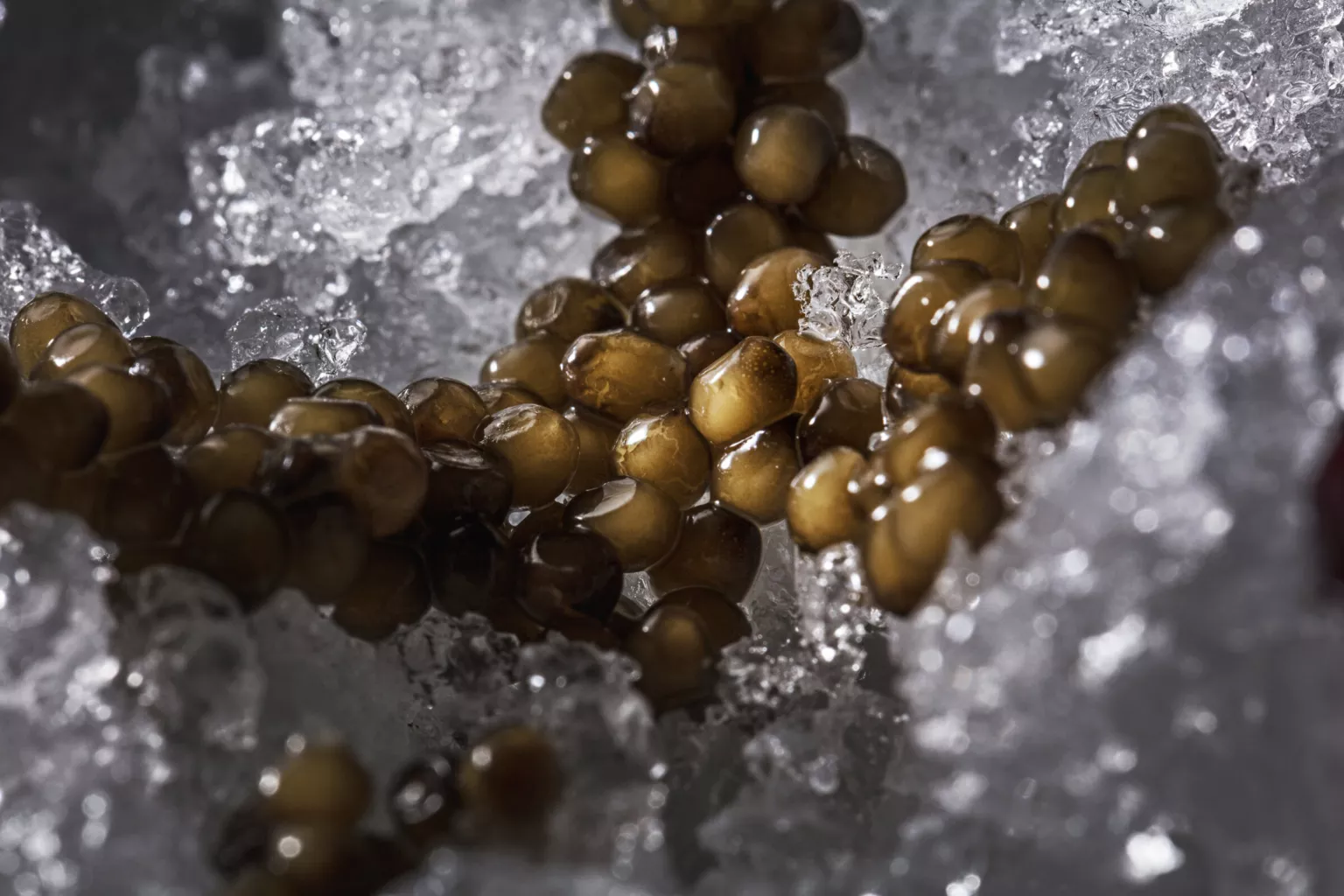How caviar farms are organised

Gourmet House Caviar farms are located in Poland and China. They are equipped with the latest technology and reproduce conditions as close as possible to the natural habitat of sturgeons in the wild. In order to produce premium caviar, it is very important to maintain optimal water quality and temperature and to use the right feed – after all, the food and conditions that sturgeon receive are key factors affecting the quality of caviar. Equally important are the processes of extraction, processing, salting, packaging and storage of this delicate product.
As is typical of many resellers, caviar is often stored outside the optimum temperatures of -2 to +2 degrees Celsius. As a result, the product will begin to break down and important characteristics such as the integrity, elasticity and graininess of the eggs will deteriorate.
All these processes require meticulousness, careful control of production standards and, of course, considerable experience, which at Gourmet House Caviar has been carefully handed down and respected from generation to generation.
In addition, one of the priorities for Gourmet House Caviar is sustainability.
How to understand the varieties, flavours, colours and prices of black caviar

Caviar is obtained from sturgeon fish, which in turn have an extensive internal classification. The unique taste, colour and size of the eggs depend on the sturgeon species from which they are obtained.
For example, what is called ‘sturgeon caviar’ is traditionally made from Gueldenstaedtii, beluga caviar – a speciality of Gourmet House – from Huso Huso.
There are also Baerii Caviar or the exclusive Almas King, a rare find that is widely prized by royalty and sheikhs. Almas can range in size from small to medium-sized eggs with a unique translucent amber colour.
Caviar prices can vary greatly due to the rarity of the fish and the time it takes for them to grow caviar. Different species of sturgeon reach maturity and readiness for harvest at different ages. For example, beluga caviar, which comes from Huso Huso, is a record-breaker in terms of production time – from 20 to 25 years just before extraction.

Prices for the cheapest varieties start from £1,100 per kilo and the most expensive, Almas, from £32,000.
In addition to these types, there is also Italian white sturgeon caviar, French crystal caviar Baerii, Sevruga, Oscietra, Oscietra Royale Gold, Imperial Caviar, Kaluga Caviar and Beluga XXX.
Beluga’s is usually medium to large in size, light grey in colour with a charming ‘marbled’ effect. It has a delicious creamy flavour and is considered the most ‘elegant’.
The colour of Oscietra caviar varies from brown and grey to yellow. The eggs are medium to large in size, have a smooth, velvety texture and a pleasant aroma of the sea. The Oscietra has a complex flavour with piney and nutty undertones.
Oscietra Royale comes in light brown to light olive colours, medium to coarse grain size with a smooth and velvety texture and a pleasant aroma of the sea.
How the average person can tell good caviar from bad caviar

On inspection, the eggs should be uniform in size, firm and not mushy. The eggs should be of a uniform colour with a beautiful sheen and no excess oil. Gourmet House Caviar‘s caviar masters sort the caviar at the source, selecting the best for distribution within the brand. Product that does not pass quality control is usually used for alternative production, such as caviar oil and more.
How to eat caviar correctly: combinations, drinks, rituals

- Caviar is great with crackers and pancakes and served with crème fraîche (French fermented milk product), chopped onions and chilli.
- Another great set would be caviar on a jacket potato, also topped with crème fraîche.
- Another exquisite way to enjoy the pure flavour of caviar is called Caviar bumps, – in this case caviar is eaten straight from the hand – traditionally placed between the thumb and forefinger.
- Among drinks, the ideal pair for any type of caviar is cold vodka, which serves as a palette cleanser, truly revealing all the nuances of the product, or champagne – it’s a classic.
How to store caviar correctly
Caviar is stored in the refrigerator at a temperature of -2 to +2 degrees Celsius. Shelf life – up to four months, after opening the jar caviar should be consumed within 48 hours.
About Gourmet House Caviar shops in London
The Gourmet House production facility is located in London’s famous New Covent Garden Market. Gourmet House has its own farm and team that processes, sorts and packs the highest grade caviar, sourced directly from the brand’s caviar farms. Everyone can visit the space and personally observe the production process, as well as taste the products.
In addition, the boutique Gourmet House Caviar & Deli is located in Notting Hill and is open 7 days a week. It offers a wide range of gourmet products including caviar, wagyu, truffles and foie gras. There is a drinks bar and a deli counter where guests can enjoy different types of caviar with a glass of champagne or with afternoon tea, for example, in a sophisticated setting.
